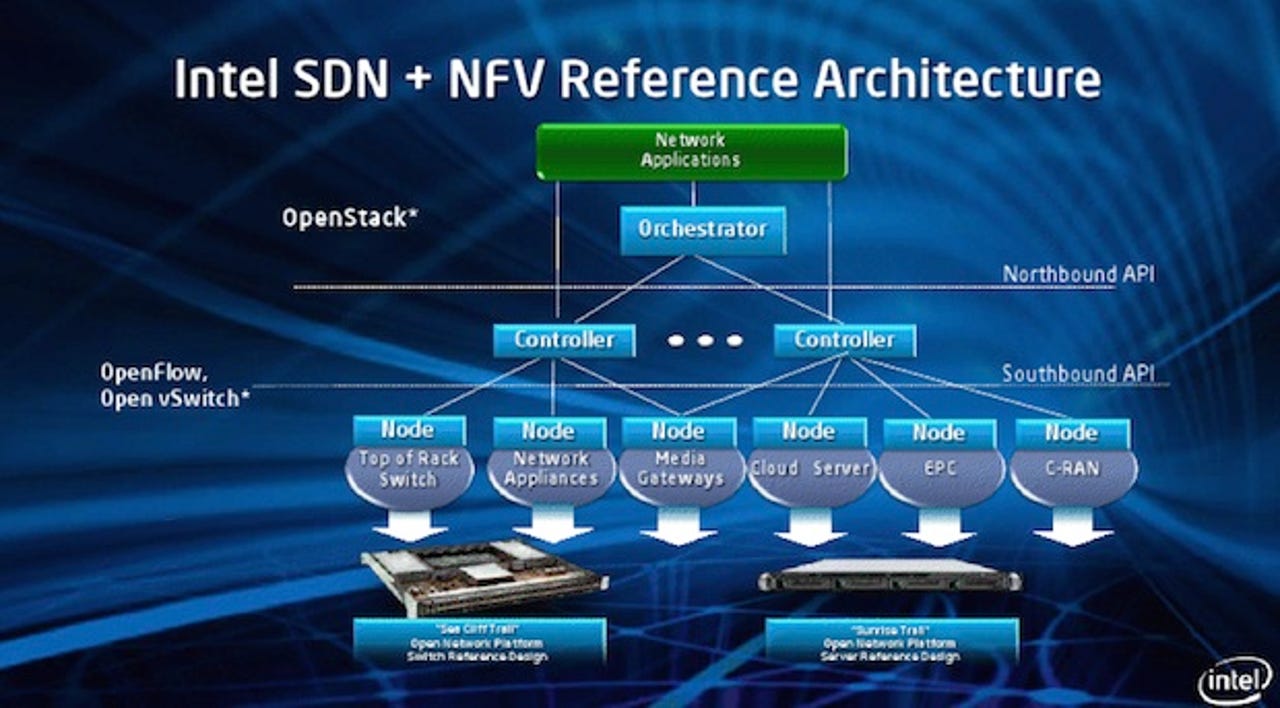Intel outlines new strategy, investments for cloud-based networking


Intel is ramping up its networking strategy with a series of new investments and solutions centered around software-defined networking and network function virtualization.
Openness is big theme that Intel is promoting here, especially given that the following trio of products are being unveiled amid the Open Network Summit in Silicon Valley this week:
- Open Networking Platform Switch Reference Design: In this particular design, Intel is taking its flagship products (i.e. Core or Xeon-based CPUs) and combining them with accelerated 89xx series chipsets and FM 6700 Switch (included with last year's Fulcrum acquisition) for native encryption and compression. This reference design supports open source Linux OS, open extensible management APIs, OpenFlow, and Open vSwitch.
- Open Networking Platform Server Reference Design: While supporting much of the same open network platform software as the server switch reference, this reference also supports Intel's DPDK Optimized vSwitch and OpenStack.
- DPDK Accelerated Open vSwitch: Basically, this data plane development kit is designed to allow OEMs to run data plane workloads on Intel architectures using off-the-shelf servers.
See also: Dell intros new SDN fabric for data economics, architectures | HP builds up OpenStack portfolio with new messaging, bursting services
Intel reps explained that these announcements reflect a certain evolution, or "revolution," expected to be storming datacenter and telecom networking environments over the next few quarters.
The trio of product announcements today specifically concern supporting reference architectures and making it easier for both partners and end-users when deploying and managing network capacity to growing demand.
Intel's rationale about the inspiration for these products is that given the exponentially growing amount of mobile devices and data in both consumer and enterprise tech, current proprietary models are going to be very heavy on the economics of the datacenter.
Thus, the objective (from Intel's perspective) is to help reduce expenditures while accelerating new services that can be deployed by moving business to SDN and NFV architectures running on X86 architecture-based servers.
With telecom, cloud and enterprise datacenters specifically in mind, Rene Torres, director of marketing for software-defined networking and network function virtualization at Intel, added via telephone on Monday its typically very expensive to provision proprietary models within these infrastructures -- especially given that they usually come with software and hardware bundled together.
Torres described that there's already significant traction for data in switching and networking appliances, but he suggested that telecom is still at the "bottom of the iceberg.
"SDN is really tied to separating the control versus the data plane," Torres remarked. "You now have ability to go and program network through external applications."
For example, Torres said that SDN-based transformations can enable the shift from "monolithic vertical integration boxes" to networking within virtual machines using open standard solutions.
The Intel Open Networking Platform Server Reference Design will be available immediately, while the Open Networking Platform Switch Reference Design is scheduled to follow this fall. Intel promised more details to be revealed about the latter during IDF 2013 this September.
However, the Intel DPDK Accelerated Open vSwitch is still undergoing testing, so don't expect that one for awhile.
Screenshots via Intel